 Your new post is loading...
 Your new post is loading...
A student YouTuber by the name of Lucas VRTech has designed and 3D printed a pair of low-cost finger tracking gloves for use in virtual reality. Named LucidVR, the open-source gloves are currently on iteration three, and grant users the ability to precisely track their fingers without the use of dedicated VR controllers. Lucas is […]
Presque vingt ans après la naissance de Google, en 1998, il reste toujours des courageux pour vouloir concurrencer le géant de la Silicon Valley. Après Qwant, un autre moteur de recherche français, baptisé Xaphir, a discrètement été mis en ligne fin mars. « Google et ses alternatives, Baidu, Bing ou Yandex utilisent le PageRank, qui consiste à faire remonter les pages les plus populaires. L’utilisateur est enfermé dans une bulle de la connaissance qui l’empêche, par exemple, de voir qu’Arsenal n’est pas seulement un club de foot », explique Eric Mathieu, son PDG fondateur.
Xaphir est la contraction de la lettre « x » qui désigne l’inconnue en mathématiques et du saphir, la pierre précieuse, mais aussi le nom d’un livre de la connaissance qui, selon « une légende très ancienne », aurait été remis aux hommes par l’Eternel, précise l’entrepreneur. Ce moteur d’un nouveau genre entend ouvrir à l’internaute les portes du monde en lui offrant, pour chacune de ses demandes, des résultats de recherche très diversifiés.
« Un moteur humaniste »
L’internaute tape un mot-clef puis, en fonction des réponses, ajoute ou retire très simplement dans la boîte de recherche certains des résultats qui apparaissent, qu’il s’agisse de pages Web, d’images ou de vidéos. « Nous voulions sortir de la recherche par mots-clefs. Notre moteur permet de combiner “n” documents en “n” dimensions. Nous rajouterons ensuite la voix, les coordonnées géographiques, etc. », explique Eric Mathieu, qui présente Xaphir comme « un moteur humaniste », dont l’objectif est « d’offrir impartialité, diversité et universalité".
Last year, it took a shot at creating its own pseudo mobile operating system with Facebook Home, an Android app that replaced your home screen with a pretty stream of photos and updates from your Facebook feed. It was a dud. Then there were the series of separate mobile apps like Poke, Camera, and Paper that have largely failed to resonate with people. Most seem to be happy with the regular Facebook app, Instagram, and Facebook Messenger. But at today's F8 developers conference, Facebook unveiled some new tools that will give Facebook a deeper level of control over your phone, no matter what kind of device you use. The most important one is called App Link, a tool that developers can use to help their apps and websites talk to each other. To use Facebook's example, imagine looking up a movie review on your phone on the mobile Rotten Tomatoes site. Well, what happens if you want to use the Fandango app to buy tickets to that movie? As things stand now, you'd have to close out your browser, launch the Fandango app, and then search for the movie again. With App Link, the Rotten Tomatoes developers would be able to provide you with a link that lets you jump right into the movie's ticket page in the Fandango app. In theory, it's seamless. That process is also called deep linking, and it's been a messy problem for app developers until now. Apple, Google, and Microsoft don't make it very easy for developers to use deep linking on their respective mobile operating systems. App Link is open for any developer to use, so over the next few months you can expect to see more and more of your apps start playing nicely with each other.
Don’t call Cone a speaker. It’s a “thinking music player.” That, anyway, is how Duncan Lamb, co-founder of Aether, explains his company’s new offering, a conical music-machine that learns your tastes and seamlessly streams the songs you want to hear. It’s a fairly radical reinvention of a familiar gadget–a speaker that relieves you of the responsibility of DJing every song at every step of the way. But it’s also an example of how the internet of things is quickly maturing, proving that clever algorithms and beefy processing power can be combined to make products simpler to use, rather than more complex. Take a close look at how you listen to music today, and you’ll find that complexity clogging things up at every stage. For all the on-demand ease of subscription services like Spotify and Rdio, you still have to figure out what to listen to. Then you have to account for other sources, like internet radio and podcasts. At some point, you have to figure out how you’re actually going to listen to this stuff in your house. Is it synced to your phone? Is it on your PC? Will the device it’s playing on stream to your living room speakers?
Mark Zuckerberg swore his team wasn't making a Facebook phone. But today, he greeted a room full of press in Menlo Park with a different message. "Today we're finally going to talk about that Facebook phone," the social network's CEO said. But by "Facebook phone," Zuckerberg doesn't mean actual hardware. Instead his team created Home, a concept that changes the "soul of the phone," the home screen. "What would it feel like if our phones were designed around people, not apps?" Zuckerberg asked the audience. "We're not building a phone. We're not building a new MP3 player. And we're not building a new internet communication device," Zuckerberg said. Instead, Facebook Home appears the moment you turn on your phone or wake it up from stand-by mode (Zuckerberg says people turn on their phones an average of 100 times per day). Facebook Home doesn't display the typical static background photo. It shows story after story posted by friends to Facebook or Instagram in real-time. It displays status updates, photos, and other open graph stories with large images. Below is a graphic that simply explains what Facebook Home is. It's an integration on top of Android's Operating System but beneath the app icon layer we're all used to seeing on our smart phones. Facebook has built the first home screen that comes to life, and updates in real time.
In 1984, the New York Times ran an article slamming the concept of windows-based operating systems.
Nicholas Carlson just pointed it out as an example of why you shouldn't listen to gadget reviewers. He's right about that as far as it goes: You shouldn't listen to gadget reviewers. It only leads to heartbreak.
But the New York Times article is actually amazingly prescient, if you think about the future of computing today.
What's magnificent about Apple's iPad and Microsoft's new Surface? They let you focus on a single task, by design.
UI design is about maintaining consistency while expanding possibilities. Looks like Facebook's latest iOS update does the opposite... Today facebook changed (once again) the gestures that everybody knew by now (given the high usage rate of the app), which will induce latency, friction and frustration from single handed, zero attention span millions of users. But maybe one can see some wisdom in such choices, that over time may be progressively forgotten. More frustrating are some feature reductions, namely in the photo area of the app that now longer allows posting pictures that are not in the camera roll. For instance, it is no longer possible to enrich a post with a photo picked in an existing album, including the photostream. This is a big restriction in terms of features and UI, with no understandable reason. Please voice your comments and reactions.
Could you succeed in every aspect of your job using just a smartphone or tablet? One exec decided to try it for a year. Here's what he has learned. Caveat: success depends a lot on the type of job, and in this particular case there is some strong bias
Via Alain Rodermann
So Apple won its big patent lawsuit against Samsung (at least 1st round) and everyone commented about the consequences and the Apple Tax, but what about the ground ? Business Insider have pulled together the six patents the jury says Samsung violated. For instance Utility Patent 163: Enlarging documents by tapping the screen : you know when you double tap text that is too small and it enlarges? Or when you double tap and the text centers? Well Apple owns that patent and the jury agreed that Samsung violated this one with 12 of its phones Maybe Steven Spielberg or John Underkoffler should have patented most of Minority Report's gestures after all as evidenced in http://fon.gs/minority-report-ui-analysis
The Pathway explores how systems responsive to behaviour patterns and sensor data enable new experiences better suited to individual user needs. It aims to solve specific design challenges around the self learning process, balancing dynamic and consistent interface elements, approaches to privacy management and making it easy for users to correct contextual mistakes. • In which scenarios do real-time sensor data and behavioural patterns combine most effectively to reveal user context?
• What is the right balance between dynamic, contextually responsive elements and consistency in the user interface?
• How can contextually responsive experiences respect privacy yet learn user behaviour quickly enough to deliver benefit?
• How do graceful failure techniques allow users to correct inaccurate contextual guesses and reassure the system is learning from mistakes?
The ability to understand user context is increasing continuously. New sensors and data points colour ever more detail into the picture of who a user is, what they’re doing and where they are interacting with digital services. The way in which design responds to context, however, lags this new availability of contextual data points. This is due partly to the relative complexity of creating contextually responsive digital experiences and partly to a misconception among designers that users are willing to change their context in order to gain access to particular products. In reality, such life altering products are few and far between. Most experiences, and particularly those distributed across multiple digital touchpoints, can be made better by embracing contextually responsive principles.
|
We all know life hasn’t been the same since Apple launched the iPhone nearly ten years ago. That little screen is always nearby—in our pocket or backpack, on the nightstand or under the pillow—beckoning us. Each of us feels the pull, and it’s hard to dimensionalize. How much are we really attached to our phones physically, cognitively… emotionally? As people nerds, the dscout research team exists to understand that pull. When we first dug in, what we discovered was a dearth of good data. Pundits have long tossed about statistics for how often we use our phones, but pretty much everyone references the same 2013 Kleiner Perkins report citing 150 mobile sessions a day—and often that number, now three years old, is taken out of context. We decided to dig for some data of our own. dscout’s web-based research platform pairs with a smartphone app to capture in-the-moment behaviors. For this study, we recruited a demographically diverse sample of 94 Android users from our pool of more than 100,000 participants. Then we built a supplementary smartphone tool to track every user’s interaction across 5 days, 24 hours a day. And by every interaction, we mean every tap, type, swipe and click. We’re calling them touches. Like a Greek tragedy, what we learned was simultaneously expected and astonishing—and a little bit sad. What follows are insights to help you better understand the intensity of the mobile life your users live, so your brand, products and strategies can become part of it.
We are at the very beginning of a fundamental shift in the way that humans communicate with computers. I laid out the beginning of my case for this in my essay The Hidden Homescreen in which I argued that as Internet-powered services are distributed through an increasingly fractured set of channels, the metaphor of apps on a “homescreen” falls apart.
The first obvious application was in chatbots, but as new unique interfaces come online, the metaphor becomes even more important. To understand this shift, it’s worth examining how platform changes have created entirely new businesses and business models. At its heart, it’s about the relationship between the reduction of friction and the resulting increase in data collection.
A desktop app called Popcorn Time launched last week gaining considerable attention for presenting pirated streaming movies in a clean and easy to use format. It was essentially a Netflix for pirated movies. By Friday, it was taken down. The anonymous team of developers wrote a blog post proclaiming their motivation was 'we need to move on with our lives'. Now, Torrentfreak reported that a team of developers called YTS resurrected the project and officially relaunched it Sunday.
Last Friday at the Orange Institute in Silliwood, we were given the opportunity to put Tome Cruise's gloves and not simulate but operate a gesture based, real time interaction with real content displayed on several screens, including a Surface. The result was amazingly fluid, with a short gesture learning curve and an immediate interface feedback, conveying a very smooth and playful experience.
For the last couple of years, sales of Android-based smartphones have been smoking every other kind of smartphone, including the iPhone. Android phones now account for nearly 75% of the global smartphone market. The next closest competitor is iPhones, which have about 15% of the market.
In the U.S., Android is clubbing iPhone 53% to 34%. Given such a disparity in phone sales and usage, you would think that things people do with smartphones--smartphone-based activities--would be equally dominated by Android.
But they aren't. They're not even equal.
In fact, iPhone users completely dominate Internet-based smartphone activities. A recent survey of mobile web usage found that a staggering 60% of mobile web visits came from iOS devices, while only 20% came from Android. A study IBM did of Black Friday online sales showed much the same thing--except that it was even more skewed. iOS (iPads and iPhones) accounted for nearly 20% of Black Friday sales. Android devices, meanwhile, accounted for only 5.5%.
Not content with synchronizing your phones to make one giant speaker? Researchers at the Tokyo University of Technology have developed "Pinch," an interface that lets you connect multiple devices together to form a giant disjointed display. Although the technology behind the interface remains a mystery — described only as a Wi-Fi based system — a video posted by DigInfo TV shows Pinch in action. To connect two devices, a user simply needs to pinch two adjacent screens together. The screens can be linked together in whatever alignment you choose, as the position and screen size of each display is communicated on a successful pinch. It's not the first time developers have managed to link together multiple smartphone displays, but this is definitely the slickest interface we've seen.
Takashi Ohta, Associate Professor at Tokyo University of Technology, envisions the Pinch interface being used for a variety of apps. "People probably own just one of these devices each. I think people could communicate in fun ways by getting together with friends and putting their devices next to each other." Potential uses include music, advertising, and photo sharing — although depending on how fast the tech is we'd love to see some games take advantage of the interface. The research team is offering Pinch to interested developers and says that several have already taken them up on the offer.
Price and shipping might not seem like the traditional remit of a user experience team, but they should be. .../... If you look at it from a customer perspective, there's no mystery to the success of the iPhone: it fits your life better. It only seems mysterious when you can't understand why someone would choose a slower processor, smaller screen and fewer megapixels. The mystery comes from measuring the wrong metrics and, indeed, trying to measure intangibles which can't be calculated in a spreadsheet.
Worth a full read on his blog : Six months ago I deleted email from my phone by unlinking my Gmail account from the iPhone Mail app. Technically I could still check my email using Safari but I use 1Password to manage my passwords and the experience on mobile requires several,...
Beyond an impressive (and long awaited) speed and UX improvement, facebook's last iOS release raises the HTML5 vs.native apps debate to a whole new level
"Say goodbye to your mouse and keyboard." Leap represents an entirely new way to interact with your computers. It’s more accurate than a mouse, as reliable as a keyboard and more sensitive than a touchscreen. For the first time, you can control a computer in three dimensions with your natural hand and finger movements. This isn’t a game system that roughly maps your hand movements. The Leap technology is 200 times more accurate than anything else on the market — at any price point. Just about the size of a flash drive, the Leap can distinguish your individual fingers and track your movements down to a 1/100th of a millimeter. This is like day one of the mouse. Except, no one needs an instruction manual for their hands.
|
 Your new post is loading...
Your new post is loading...
 Your new post is loading...
Your new post is loading...






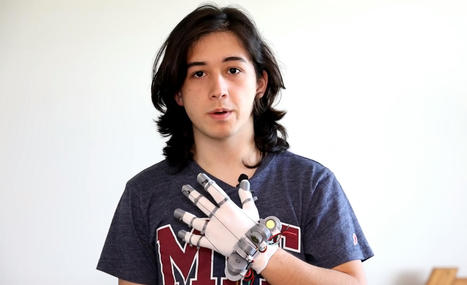

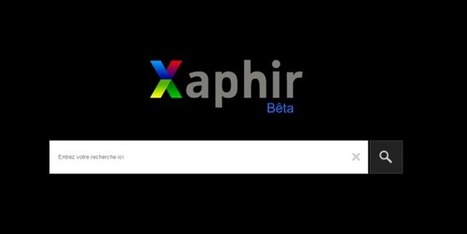
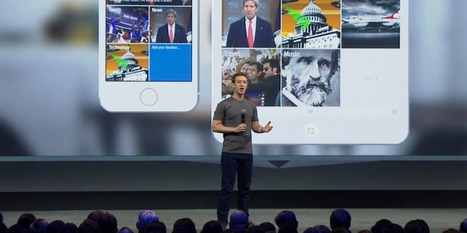
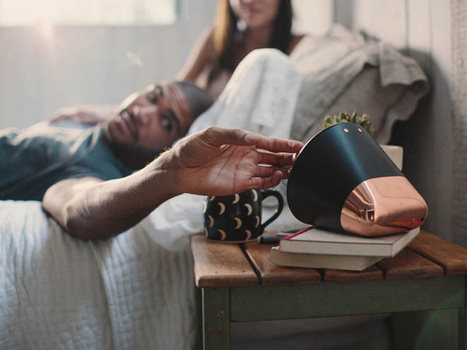

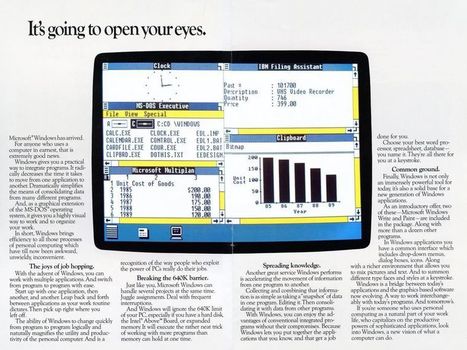




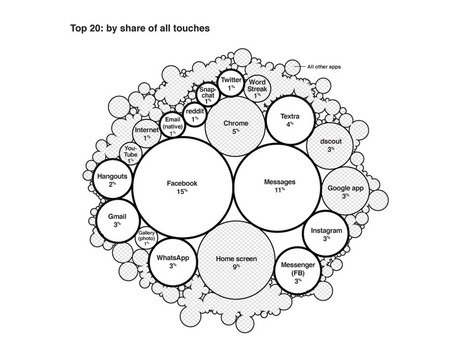
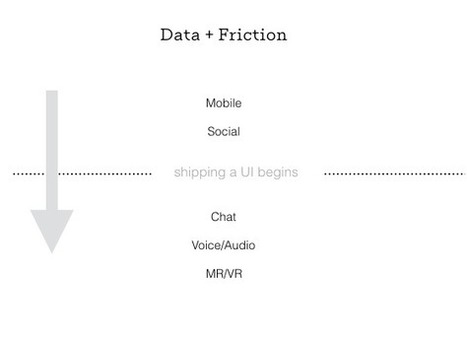
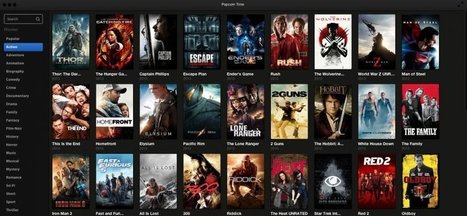
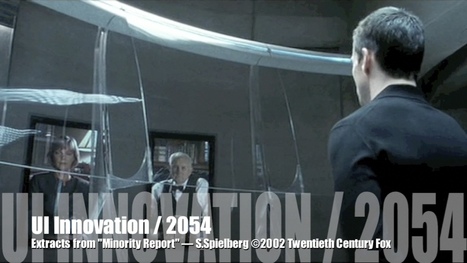
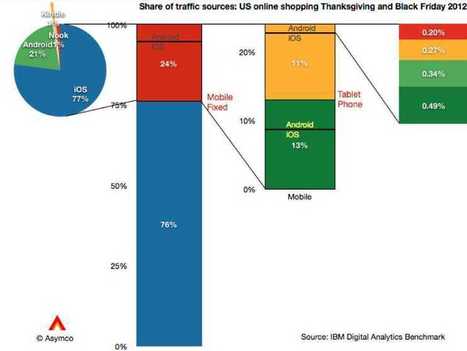



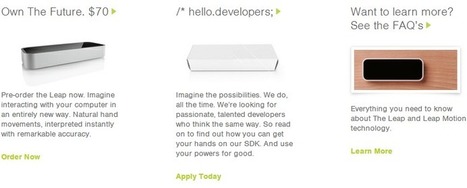





Oblong's implementation of the Minority Report Gloves was certainly more expensive — https://vimeo.com/76468455